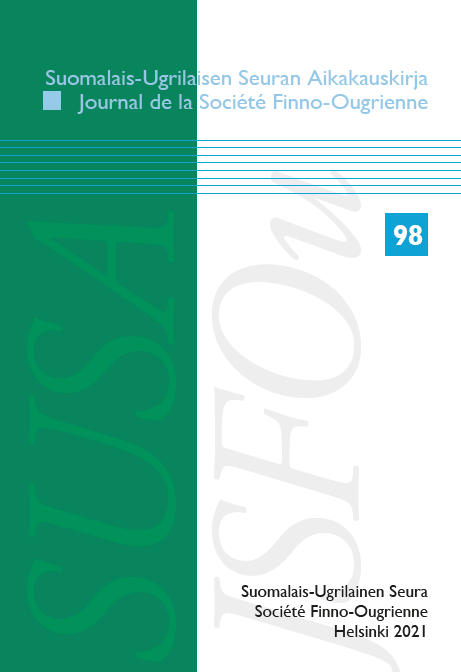Mihin suuntaan saamen progressiivirakenteet ovat menossa?
Huomioita lea jođus, lea manus -ilmaustyypistä pohjois- ja inarinsaamessa
DOI:
https://doi.org/10.33340/susa.97223Abstract
The Saami languages utilize a long-established progressive construction based on the inflected copula verb and the so-called action essive form of the main verb, for example North Saami lea dahkamin ‘is doing’ of dahkat ‘to do’. The present paper examines an apparently innovative construction that has not been described before, similarly appearing in a progressive function but based on the inflected copula and the locative case form of the deverbal noun in -u, for example lea jođus ‘is going’ of johtit ‘to travel, go, be in motion’. The main data source used is the SIKOR corpus, containing contemporary written language material in several Saami languages; supplementary sources of both written and oral material and of different ages are used as well. The data reveals that the new construction is frequently used of the verb johtit ‘to travel, go’ in modern North Saami (leat jođus) and fairly known in Inari Saami, too (leđe joođoost). It is used more rarely of the verb mannat ‘to go’ in North Saami (leat manus); from Inari Saami there is only a single attestation of this verb in older data. Other verbs are not observed to be used in a similar construction, and the innovation seems to be confined to the contemporary use of these two Saami languages. It is argued that there are both language-internal and external factors that have contributed to the emergence of the leat jođus construction, including the global tendency of progressives to develop out of locative constructions and most importantly the model of the contact language Finnish, where a structurally identical deverbal noun based progressive construction is commonly used of the most frequent motion verbs (olla menossa ~ tulossa ~ lähdössä of mennä ‘to go’, tulla ‘to come’, lähteä ‘to depart’).





